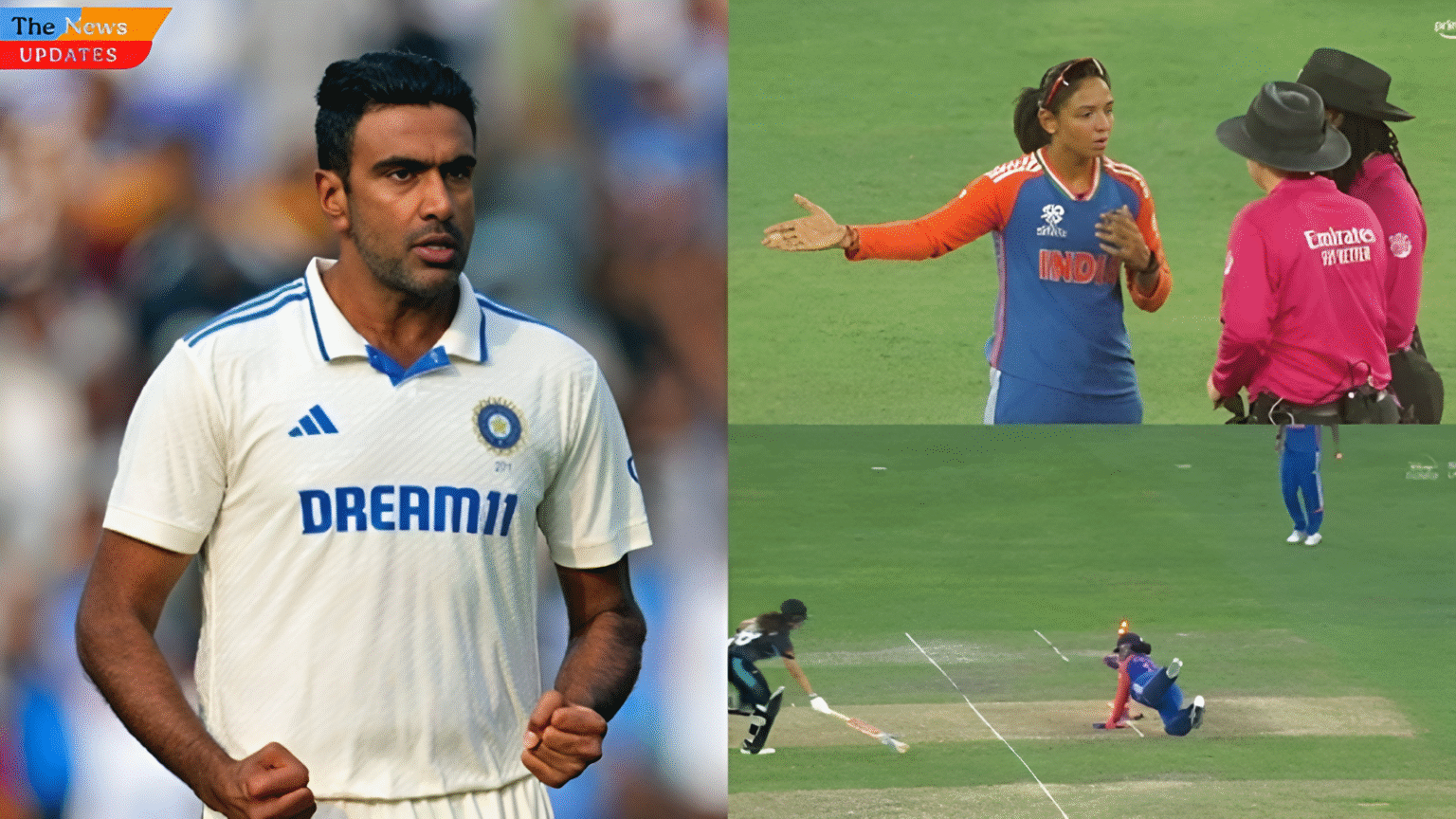IPL latest news 2025 , which is often called a gentleman’s game, sometimes gets involved in problems and arguments. One such incident that has sparked widespread debate among fans and experts alike is Ravichandran Ashwin controversy reaction to a call made by a female umpire during a recent Ashwin IPL 2025 news match. The moment, captured live and circulated widely across social media, has left the cricket community asking: Was Ashwin’s response justified or did he cross the line?
The Incident: What Happened on the Field?
In a close IPL latest news 2025 match between Rajasthan Royals and Chennai Super Kings, a big moment came when the on-field female umpire, Priya Sharma, gave a no-ball decision. This call became the main reason for all the drama in the game. The call came in the 19th over of the second innings, with the match hanging by a thread.
Ashwin, known for his passion and sometimes fiery demeanor, immediately protested the decision, gesturing toward the umpire and engaging in a heated exchange. Cameras caught every moment, including his animated gestures and what seemed to be a verbal complaint directed at Sharma.
Why It Sparked Outrage
- The Gender Angle: This was one of the rare occasions where a female umpire was officiating in a high-stakes IPL match. Ashwin’s reaction was viewed by many as disrespectful and disproportionate, especially given the historic progress of women in male-dominated sports.
- The Spirit of Cricket: Ashwin has previously been in the spotlight for other contentious incidents—like the famous “Mankading” dismissal. Critics argue that his actions go against the unwritten “spirit of cricket” which emphasizes respect and fairness.
Social Media Reactions and Expert Opinions
The incident quickly went viral, with the hashtag #AshwinControversy trending on Twitter and Instagram. Here’s a breakdown of reactions:
- Supporters of Ashwin argued that:
- Players have a right to question poor decisions.
- The umpire’s call did indeed appear questionable on replay.
- Gender should not be a shield against criticism in a professional environment.
- Critics of Ashwin countered that:
- His aggressive body language was unacceptable.
- There’s a need to set a respectful example, especially for young cricketers.
- The incident could undermine the growing presence of female umpires in top-tier cricket.
Expert Take
Former cricketer and commentator Harsha Bhogle twitter:
“Ashwin has every right to be passionate, but dignity must be preserved — for the player and the umpire, regardless of gender.”
The Growing Role of Female Umpires in Cricket
Cricket has seen a promising surge in female participation, not only among players but also among officials. The ICC Women’s Championship, women’s IPL (WPL) and mixed-gender umpiring panels are all signs of positive change.
Priya Sharma, the umpire at the center of the storm, is among the most qualified in the field. She has officiated in several international women’s matches and was promoted after her stellar performance in the WPL.
Critics of Ashwin’s reaction argue that his behavior risks setting back this progress, deterring talented women from taking up roles in men’s matches.
Should Players Be Allowed to Challenge Umpires More Directly?
Some experts are using this incident to suggest that the Decision Review System (DRS) should cover more situations in the game. If players had more opportunities to challenge on-field calls, outbursts like Ashwin’s could be avoided.
However, the ICC has emphasized that respect for umpiring authority is non-negotiable and that disputes must be handled within the existing framework—not through confrontational behavior.
Ashwin’s Response
Two days after the match, Ashwin issued a public statement on X (formerly Twitter), saying:
“I apologize if my actions seemed disrespectful.I was upset with the decision, not with the umpire. I have the highest respect for Priya Sharma umpire and all officials who make this game better.”
A Teachable Moment for Cricket
The incident should not simply be brushed aside as a moment of heat. Instead, it can serve as a turning point for cricket:
- Reinforce the importance of emotional regulation on the field.
- Encourage greater acceptance of female officials.
- Update codes of conduct to address modern challenges like gender sensitivity.
FAQs
Q1: Who was the woman umpire in the Ashwin incident?
A: The umpire was Priya Sharma, one of India’s most qualified female cricket officials with experience in both domestic and international matches.
Q2: Did the umpire make a wrong decision?
A: While the no-ball call was debatable, it wasn’t definitively proven to be incorrect. The decision fell within the “umpire’s call” category, which means it was subjective and allowed under ICC rules.
Q3: Has Ashwin been involved in controversies before?
A: Yes, Ashwin has previously drawn attention for his controversial run-out of Jos Buttler (Mankading) and other fiery on-field moments.
Q4: Is there gender bias in cricket umpiring?
A: While progress is being made, female umpires still face skepticism or criticism and limited opportunities, especially in men’s tournaments.
Q5: Can players challenge umpiring decisions?
A: Yes, through the Decision Review System (DRS), players can challenge specific decisions. However, not all calls are eligible for DRS, including many no-ball calls.
Q6: Was Ashwin punished for his behavior?
A: He was reportedly given a verbal warning but not fined or suspended.
Q7: What are the broader implications of the incident?
A: It highlights the need for respectful conduct on the field, better support for female officials and possibly a review of rules surrounding player dissent.
Conclusion
If you agree with Ashwin or support the umpire, this incident highlights some important issues in the game. It forces us to question not only the limits of player emotion but also how gender dynamics are shaping the future of cricket.
As fans or analysts and players, the takeaway should be clear: the game must evolve to be fair or respectful and inclusive — for everyone involved.




